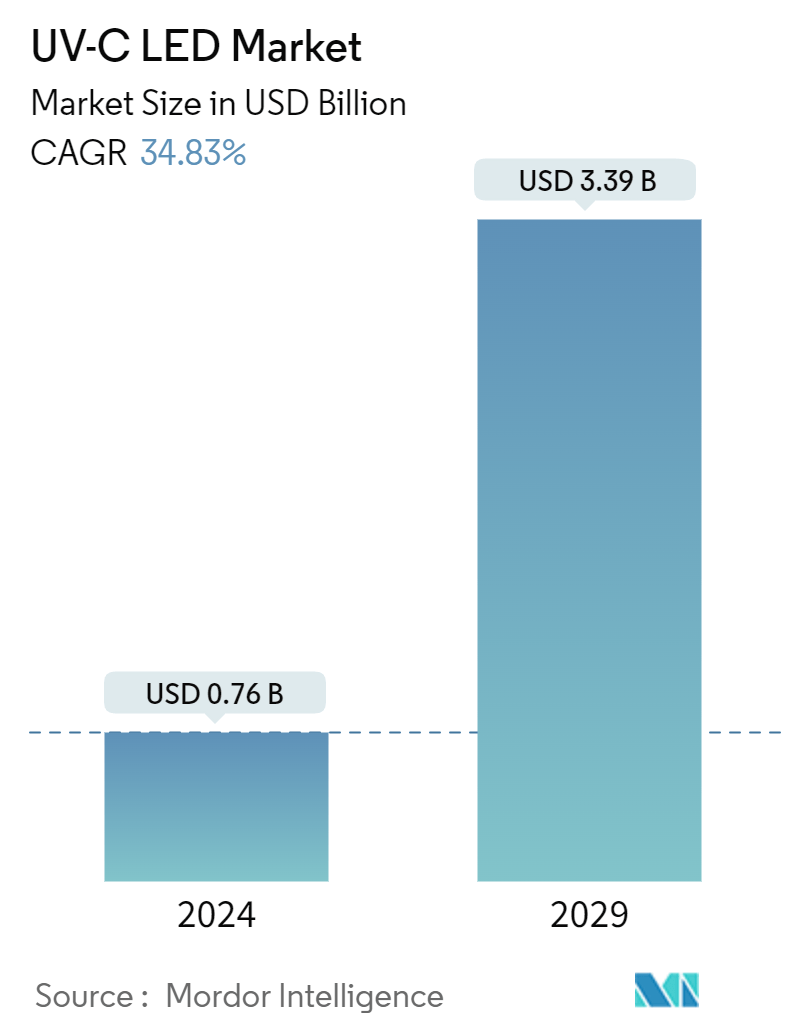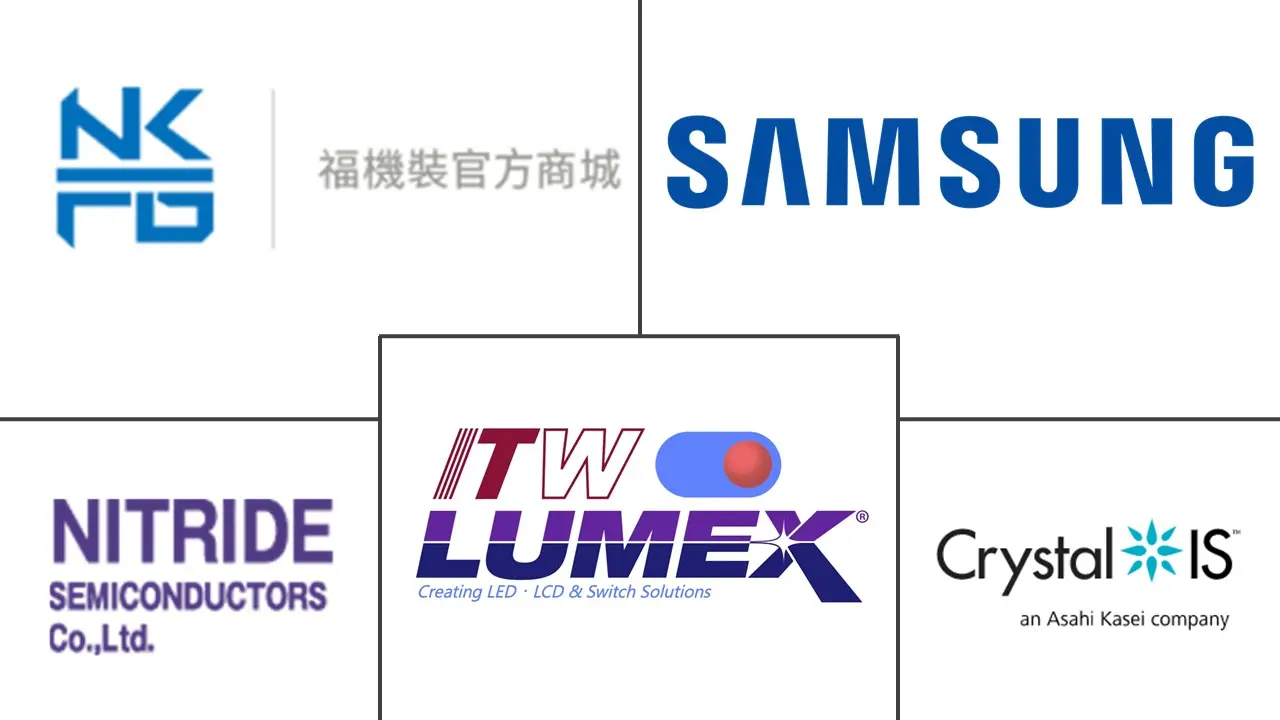Market Size of UV-C LED Industry

| Study Period | 2019 - 2029 |
| Market Size (2024) | USD 0.76 Billion |
| Market Size (2029) | USD 3.39 Billion |
| CAGR (2024 - 2029) | 34.83 % |
| Fastest Growing Market | Americas |
| Largest Market | Asia Pacific |
Major Players
*Disclaimer: Major Players sorted in no particular order |
Need a report that reflects how COVID-19 has impacted this market and its growth?
UV-C LED Market Analysis
The UV-C LED Market size is estimated at USD 0.76 billion in 2024, and is expected to reach USD 3.39 billion by 2029, growing at a CAGR of 34.83% during the forecast period (2024-2029).
UV-C LEDs produce UV photons through the electroluminescence of a semiconductor crystal; these semiconductor crystals are typically made of AlGaN compounds grown on sapphire or AlN substrates. These solid-state devices contain no mercury and do not rely on other substances that are subject to environmental restrictions; as a result, they may provide a regulatory-proof alternative to traditional mercury-containing UV lamps.
- UV-C LEDs are germicidal, which treats microorganisms and prevents them from becoming resistant to chemical disinfectants. As a result, microorganisms do not develop resistance to UV radiation. UV-C LEDs have a wide range of applications, including air, food, and water purification. UV-C is weak at the Earth's surface because the atmosphere's ozone layer blocks it.
- UV-C LED disinfection is a new technology that uses light to damage the DNA of pathogens. This technology offers a variety of unique benefits when compared to conventional UV purification. The UV-C LEDs are expected to have a lasting effect on disinfecting water, surfaces, and air, like the effect of visible LEDs in the display market.
- UV-C LED technology is progressing quickly and receiving considerable interest across various industries. Due to increasing environmental concerns regarding traditional disinfection methods, UV-C LEDs offer an eco-friendlier option. Unlike traditional UV-C lamps, UV-C LEDs do not contain mercury, eliminating the necessity for special disposal methods and decreasing the risk of environmental pollution.
- Additionally, the energy efficiency and extended lifespan of UV-C LEDs contribute to reduced energy usage and waste production. These factors are expected to drive growth in the UV-C LED market in the foreseeable future.
- Additionally, UV-C LEDs can generate UV-C light in systems that circulate air or water. Some key factors advancing the growth of UV-C LEDs include the rapid expansion of the use of environment-safe LEDs and the growth in the application of UV curing systems.
- Since UV-C LED is very effective at disinfection, a surge in the adoption of water purification is a significant factor driving the growth of the global UV-C LED industry. However, the thermal management of UV-C LEDs is considered a significant issue with the technology and restraint to the growth of the market studied.
- The COVID-19 outbreak affected the expansion of the UV-C LED market. The development of COVID-19 has sparked a meteoric rise in interest in germicidal ultraviolet (UV) technology. SARS-CoV-2 and other pathogens can be rendered inactive on surfaces, in the air, and water by UV-C band radiation (100-280 nm) produced by conventional or LED sources. Around the world, numerous universities and laboratories are creating UV-C LED-based products to stop the spread of infections. As a result, the COVID-19 pandemic's introduction has led to a significant increase in the UV-C LED market.
